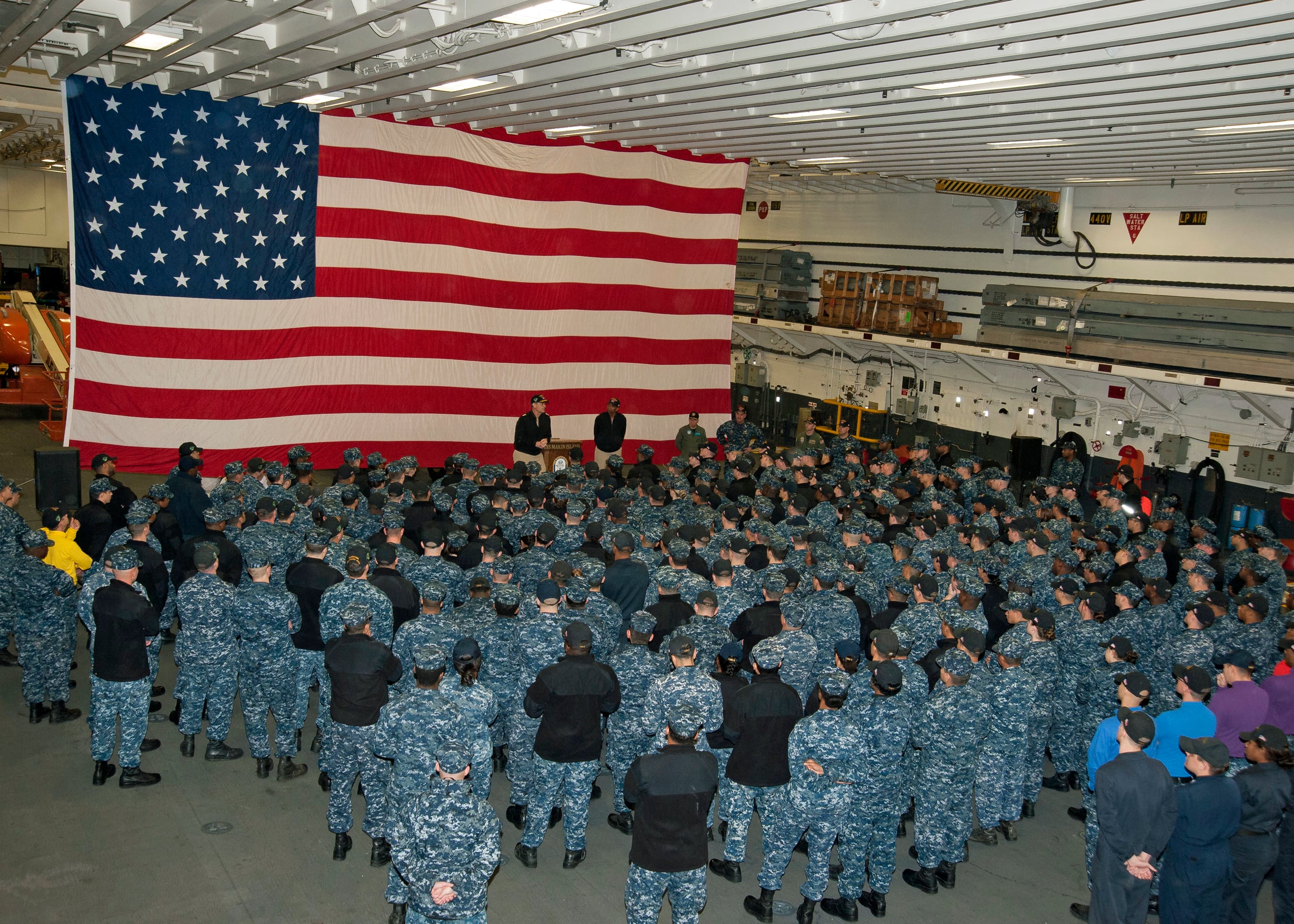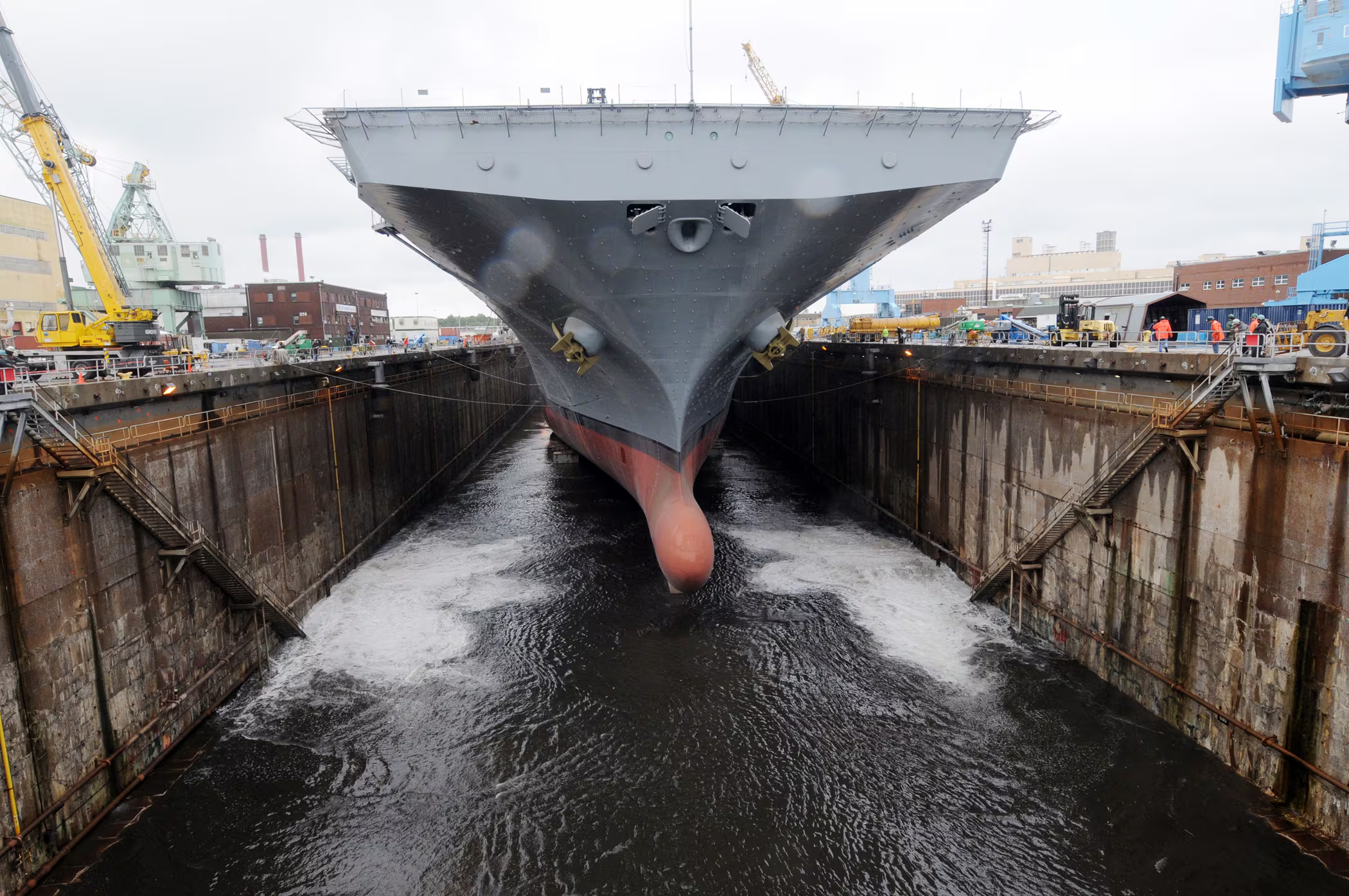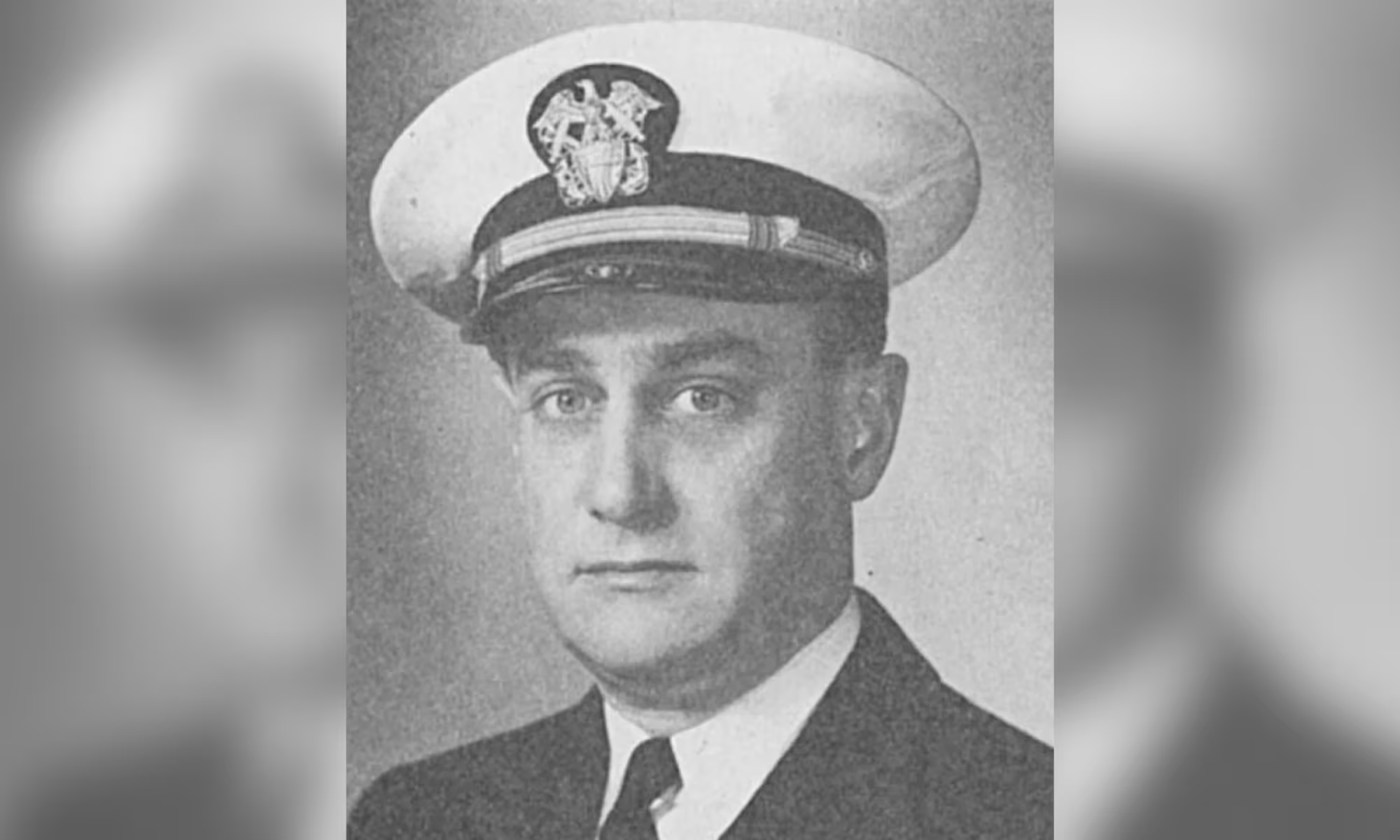The Navy’s top uniformed personnel official — Vice Adm. Bill Moran — collects command belt buckles.
His It is not a large collection. , i In fact, it’s small and he’s very picky as to what he collects.
You see, h His The collection only contains buckles from commands he said he feels are special — those with the best leadership and crews hitting firing on all cylinders.
He said he doesn’t accept gifts, he only decides deciding which if he'll acquire a buckle he wants after seeing those the dynamics of those command and crew dynamics with his own eyes.
For much of the past year, Moran has worn one from the cruiser Normandy, which he visited last summer in the Persian Gulf, while that ship it was on her its epic, ‘round the world cruise.
Pretty rare you say for a naval aviator to wear the colors of a surface ship, eh? But Moran said he has his reasons and it has nothing to do with community — only performance.
Oh, a And look out, Normandy, he’s now got another — a new buckle from the San Diego-based amphibious assault ship Makin Island.
Moran spendt time with the ship and her its crew Jan. 6 as the first stop on a quick trip through San Diego, Jan. 6. He’s now in Japan, making stops at Yokosuka Naval Base and Naval Air Facility Atsugi before heading back home via Hawaii. He also visited sailors at the Point Loma Naval Base and the Navy’s Third Fleet in California.
Moran said he likes to talk to both leadership and individual sailors and their leaders. He said he wants to get the pulse of the command for himself and wants to hear what’s on sailors' minds — and see their reactions and get substantive feedback on the policy changes the Navy has already made.
"Makin Island just came out of a significant maintenance availability and are now in the basic [training] phase and they're due to deploy this fall," Moran said in a Jan. 9 phone interview Jan. 9.
"That's a very quick turn around for any crew, but they're making it happen — you feel it from the command's triad down to the youngest member of the crew."

Vice Adm. Bill Moran, chief of naval personnel, conducts an all hands call with the sailors onboard USS Makin Island (LHD 8) on Jan. 7 during his first stop on a Pacific Fleet tour to discuss how the Navy's personnel policies are affecting sailors.
Photo Credit: MC3 Nick Cerilli/Navy
One specific thing he’s checking on is t The new physical fitness rules that went into effect Jan. 1, — which tougheneding the failure rules, but also givesing amnesty to those facing discharge with three failures in four years, going forward — as long as they stay in shape from now on. — is one of the specific things he said he is checking.
"Last fall, they had more than a hundred people on the [fitness enhancement program] and in danger of being discharged with three failures in four years," Moran said. "All but seven of those sailors are took advantage of the chance to get in standard and have a fresh start, that's not insignificant," Moran said.
But he says said not every program is perfect out of the box and there’s always room to improve. and that’s Those are some of the reasons why he said he sticks around a while after all hands calls, talking speaks one-on-one with sailors after an all hands to get their unfiltered viewpoints on current policy changes and issues impacting affecting their lives.
"I'm looking forward to spending some time on the [aircraft carrier] Ronald Reagan in particular, which was just involved in a major, three carrier swap, involving thousands of sailors and their families," he said.
"We worked hard — my staff and my people in Millington — as well as the fleet commanders to do everything we can, within the limits of policy and law to take care of our sailors, and sailors and families." Moran said. "I want to spend time with not only the command leadership but individual sailors to find out how this went for them."
Homeport swaps are something quite unique to the Navy, he said, and not easy to undertake. It's and an area where, he says said, the Navy probably still has a lot to learn. But he said he wants suggestions from those most impacted to make those improvements. The aircraft carrier Ronald Reagan changed its homeport from Southern California to Yokosuka, while the George Washington and Theodore Roosevelt flattops also changed their homeports.
"This was probably one of the largest homeport changes that we've ever done," Moran said. "While it's fresh in their minds, I really want to find out what we did right and what we did wrong," Moran said. "I also want to find out what remains to be done to make sure that no one falls through the cracks — if there's things we can still fix for our people."
But in the end, he wants a slong lessons learned from this mega-swap that can help shape policy in the future.
"I'm sure we have things that need to be fixed," Moran said. "My goal is that the next time we have to swap ships or change home ports that we have even better policies in place."
As he heads back to Washington later this week, he’ll Moran will make a stop in Hawaii to visit sailors there. , but o One thing in particular he’s looking for — rare for a P-3 patrol pilot — is spending some time underwater.
"We’re going to tgo out to sea on the [submarine] Mississippi for an overnight," he said. "She was the first fast-attack submarine to have women onboard, and I want to spend some time observing the crew and talking to everyone to get a feel for how this phase of integration is going."
Who knows, maybe Moran will arrive back home with even more new buckles? — i If you happen to meet him, catch a glance at what buckle he’s wearing today — or just ask him, he’ll gladly tell you which one he’s wearing as long as you also ask him why.
Mark D. Faram is a former reporter for Navy Times. He was a senior writer covering personnel, cultural and historical issues. A nine-year active duty Navy veteran, Faram served from 1978 to 1987 as a Navy Diver and photographer.





